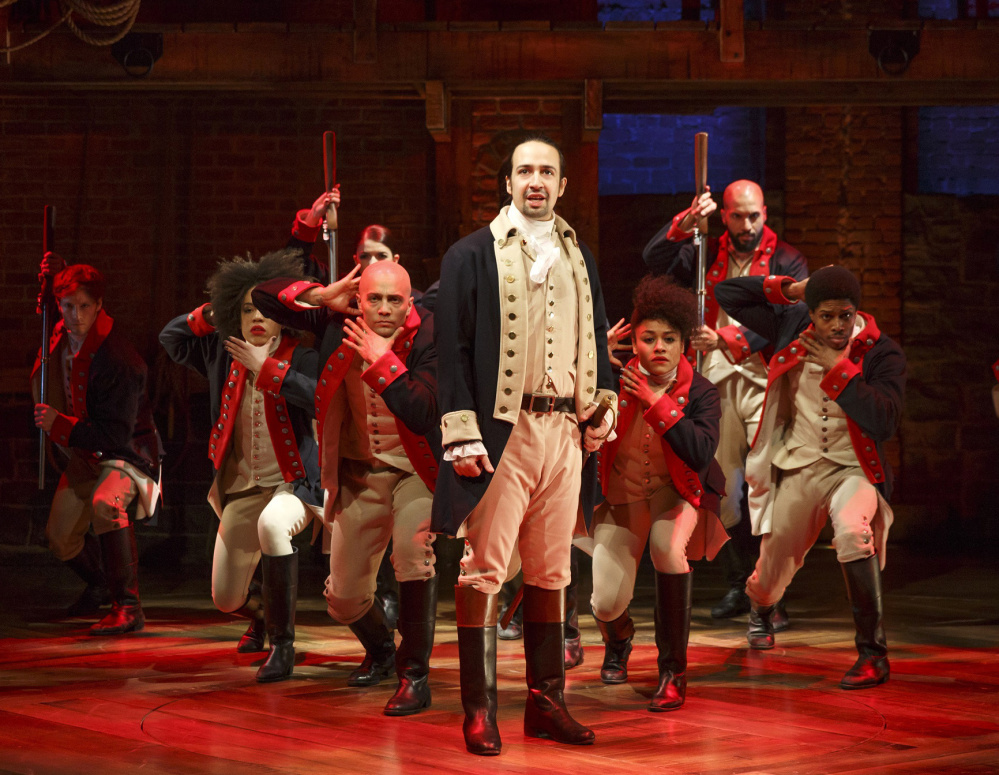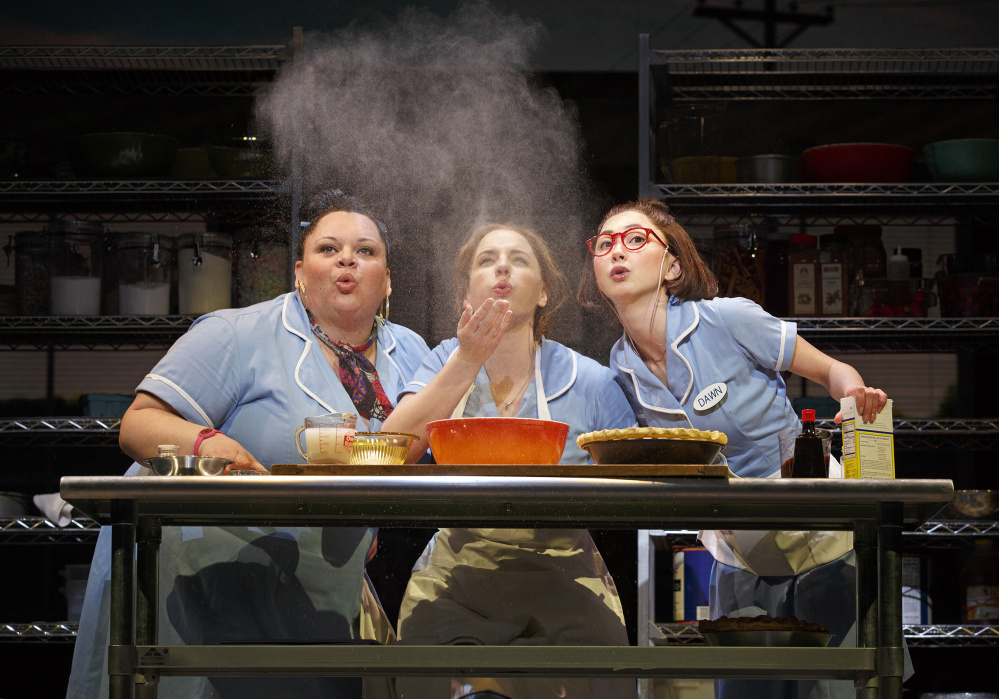NEW YORK — This season, the theater community is celebrating how Broadway has finally become the Great un-White Way.
Black actors have taken center stage in “The Color Purple,” “The Gin Game,” “Eclipsed” and “Shuffle Along.” A Latin cast shines in “On Your Feet!” and Asian-Americans told a bitter story from America’s past in “Allegiance.” The season’s megahit “Hamilton,” of course, has multi-racial leads in its DNA.
At Sunday’s Tony Awards (8 p.m. on CBS), 14 of the 40 nominees for acting in plays and musicals – 35 percent – are actors of color. And more non-whites are nominated on the other side of the stage, including choreographer Savion Glover, director George C. Wolfe and playwright Danai Gurira.
But this season’s diversity may be more a coincidence of timing than Broadway stages consistently providing an accurate reflection of America’s melting pot.
“The aligning of the stars has occurred this year where a lot of really spectacular work featuring multi-racial casts and a true photograph of what the world and America really looks like is performing on Broadway night after night after night,” said “The Color Purple” producer Scott Sanders. “Will we see this being the norm moving forward? I’m not so sure.”
Neither is Pun Bandhu, an Asian-American actor and a member of The Asian American Performers Action Coalition’s steering committee. The group is the only one that collects data on Broadway’s diversity – it started collecting it nine years ago – and it offers a sober outlook.
According to its latest report, non-white actors haven’t ever in the past nine years represented more than 26 percent of all Broadway roles. Though numbers for the current season aren’t ready yet, the numbers for minority roles last season actually dipped to 22 percent, down from the previous season’s 25 percent.
“What last year’s numbers prove is that while we may be having an extra diverse year this year … that’s not usually the case,” said Bandhu. “It hasn’t changed that much actually on Broadway.”
The numbers suggest improvements one year, then a drop off the next. The 2013-14 season was rich with roles for African-Americans, including “A Raisin in the Sun” starring Denzel Washington, Audra McDonald channeling Billie Holiday in “Lady Day at Emerson’s Bar & Grill” and the dance show “After Midnight.”
There were also African-Americans in nontraditional roles, like James Monroe Iglehart as the Genie in “Aladdin,” Nikki M. James and Kyle Scatliffe in “Les Miserables,” and Norm Lewis becoming the first black Phantom on Broadway in “The Phantom of the Opera.”
That season, black actors represented 21 percent of all roles. But the next season, the number fell to 9 percent.
This ebb and flow is nothing new to Stephen C. Byrd, a veteran Broadway producer behind this season’s “Eclipsed .” He recalls a diverse Broadway when he produced an all-black revival of “Cat on a Hot Tin Roof” in 2008.
Back then, Morgan Freeman was starring in “The Country Girl,” Laurence Fishburne was in “Thurgood” and such shows as “Passing Strange,” “In the Heights” and the original “The Color Purple” were playing.
“That was a time of great diversity on Broadway,” said Byrd, who produces minority-driven works with Alia Jones-Harvey. “We’ve been at this for 10 years and it’s taken from that time to come to where we are today to see that same diversity on Broadway.”
This season, Byrd is watching as Broadway is cheered for its inclusiveness at a time when the film industry has come under heavy criticism for a lack of diversity in the Academy Awards. There’s even been the bragging #BroadwaySoDiverse to rival #OscarsSoWhite.
But next season isn’t shaping up to be as diverse as this one.
While black actresses will lead “Cats ” and “Natasha, Pierre & The Great Comet of 1812” and African-American actors will be represented in “Motown” and August Wilson’s “Jitney,” the lead actors are so far all white for the upcoming “The Cherry Orchard,” “Heisenberg,” “The Glass Menagerie,” “The Master Builder,” “The Present,” “The Bandstand,” “Hello, Dolly!” “The Little Foxes,” “Les Liaisons Dangereuses” and “Falsettos.”
Of the six leading parts in “Holiday Inn,” only one will be played by an actor of color. All six leading roles in a revival of “The Front Page” will be played by white actors.
“As a producer, you have to be aware that audiences are demanding diversity. They want to see themselves reflected on the stage,” said Bandhu. “I think it has been proven that diversity is good for Broadway.”
Box office data shows that overall Broadway grosses are flat, meaning producers will have to attract nontraditional theater-goers if they want to see profits to go back up.
One such person used to be Daveed Diggs, an actor and rapper who earned a Tony nomination in his Broadway debut in “Hamilton.” Raised in the Bay Area, Diggs said he never went to Broadway when he visited New York.
“As someone who was on the outside of it, who’s always been on the outside of it, there is an elitism that you feel coming from Broadway,” he said. “I didn’t care because it didn’t seem like they cared about me.”
Liesl Tommy, the South African-born and Tony-nominated director of “Eclipsed,” has made it her mission to change that feeling, hiring people of color for the creative team and onstage. “To think that you are not part of the problem is a grave mistake,” she said.
Perhaps her most influential work is actually far from Broadway – the 2,000 seat theater at Disneyland where she directed a stage production of “Frozen” that will be seen by up to 10,000 people a day.
“One of the things I had to advocate for was diversity in casting,” said Tommy, who has watched people – black and white – in tears as a young black actress belts out Elsa’s anthem “Let It Go.”
On Broadway, no show has more captured the cultural mood like “Hamilton” – connecting musical theater to hip-hop and celebrating minority actors. Other important firsts were made in non-traditional casting, including Sophie Okonedo in “The Crucible” and Forest Whitaker in “Hughie.”
But even in this diverse season, there were some sour notes, as when “Dames at Sea” included grotesque racial stereotypes and a revival of “Noises Off” – a farce about the making of a stage show – had no minorities among its nine-member cast.
“The message that that sends is that, ‘Theater is for white people.’ For a show that is supposed to celebrate the industry as a whole, it really is glaring that people of color were completely omitted from that,” Bandhu said.
He urges producers to push for non-traditional casting – he congratulates “Waitress” for hiring non-whites for two-thirds of the lead actresses – and putting minority actors in lead roles.
“Hopefully things like ‘Hamilton’ start to change the curve a little bit. The penny starts to drop. When you start seeing more visible talent from actors of color and you start seeing them being popular on stages, then their absence becomes even more stark.”
Send questions/comments to the editors.




Success. Please wait for the page to reload. If the page does not reload within 5 seconds, please refresh the page.
Enter your email and password to access comments.
Hi, to comment on stories you must . This profile is in addition to your subscription and website login.
Already have a commenting profile? .
Invalid username/password.
Please check your email to confirm and complete your registration.
Only subscribers are eligible to post comments. Please subscribe or login first for digital access. Here’s why.
Use the form below to reset your password. When you've submitted your account email, we will send an email with a reset code.